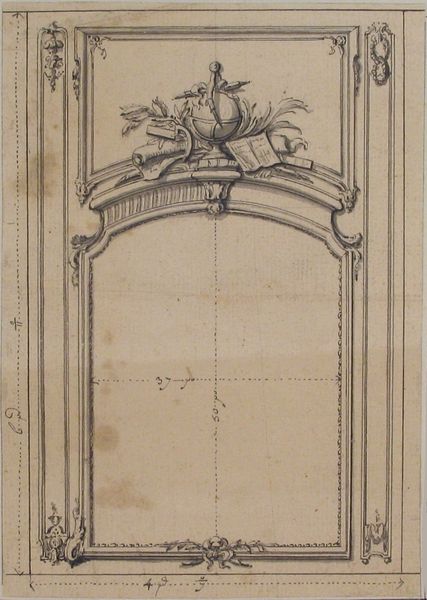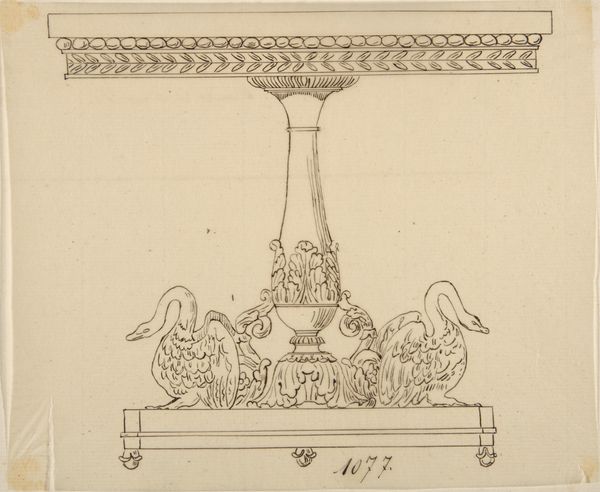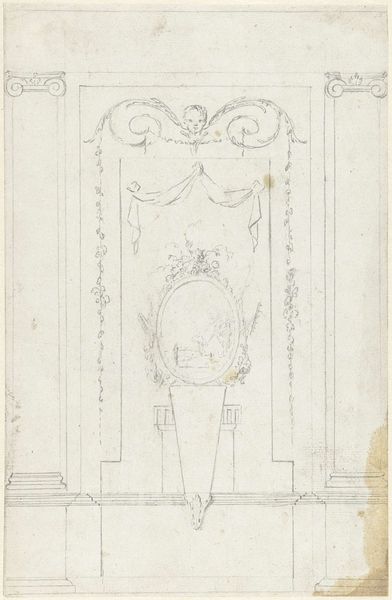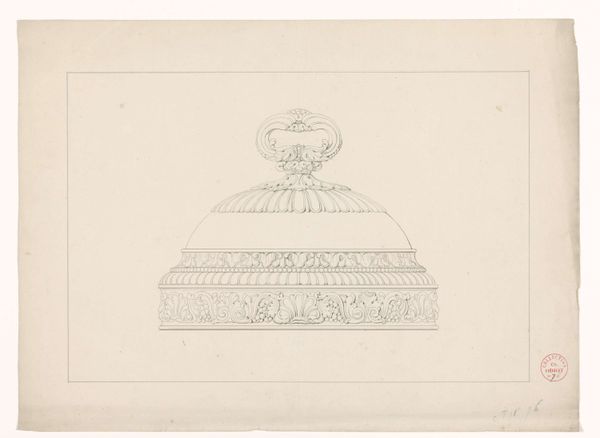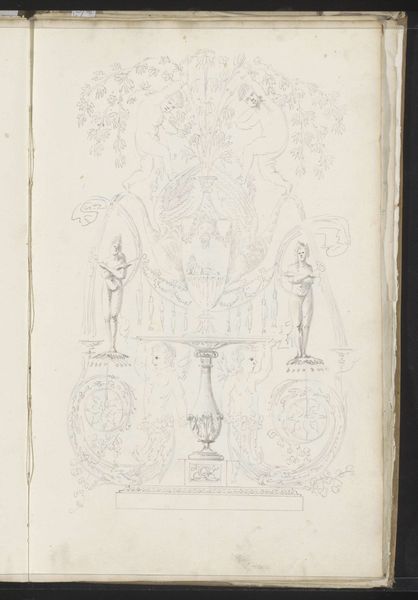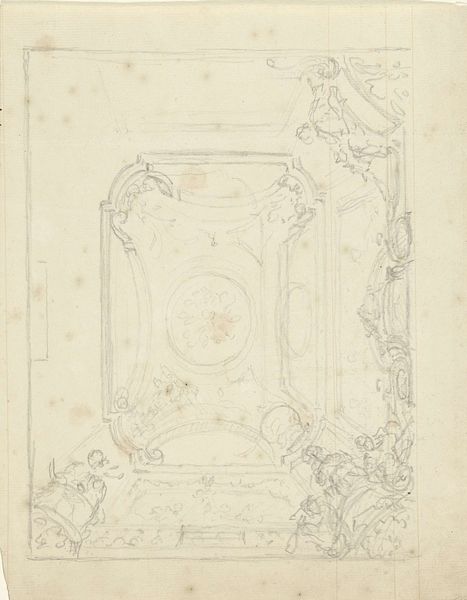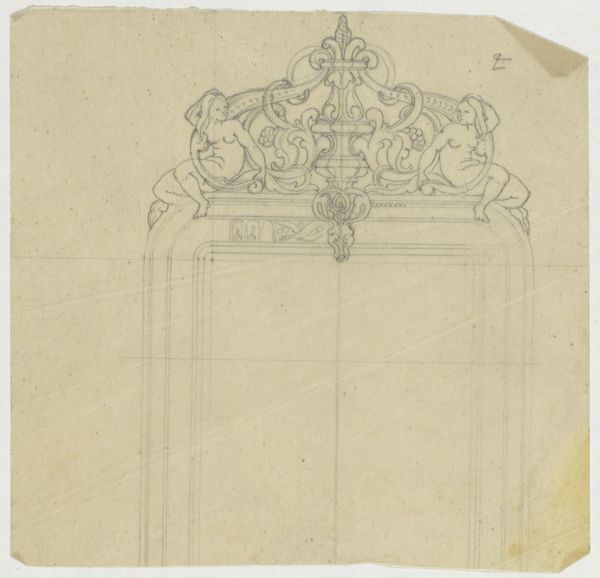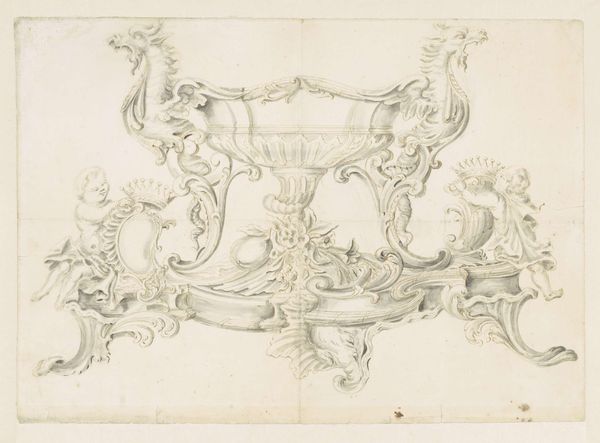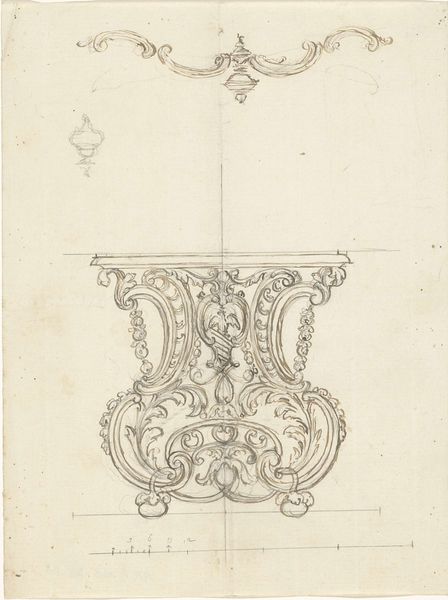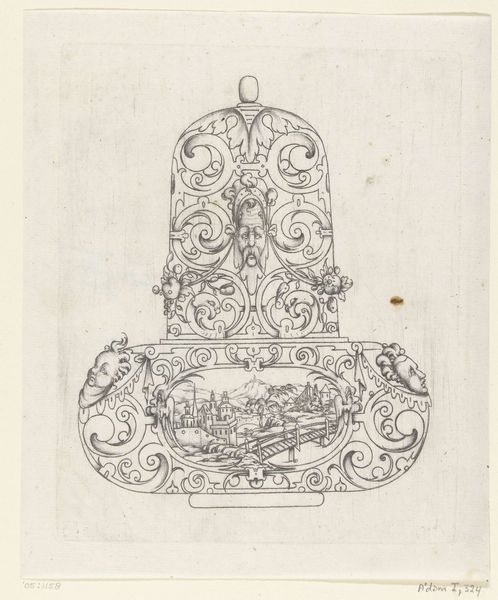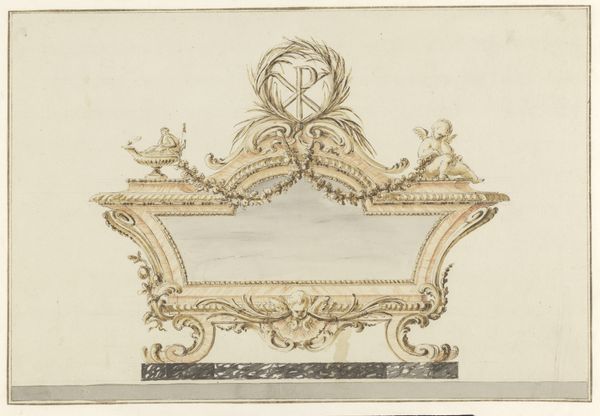
drawing, pencil
#
drawing
#
neoclacissism
#
form
#
pencil
Dimensions: height 392 mm, width 565 mm
Copyright: Rijks Museum: Open Domain
Editor: This drawing, "Ontwerp voor het bovenste deel van een lijst," by Luigi Valadier, made with pencil around 1775-1790, is fascinating! The details, rendered in pencil, make the piece so light, yet the intended structure, I'd guess for a frame or door, is obviously heavy. What do you find interesting about this drawing? Curator: Considering this design through a historical lens, it exemplifies Neoclassical ideals circulating at the time. This was a period of rediscovering and reinterpreting classical forms. The frame embodies these ideals but in this period, many artists took cues from the styles being consumed and reproduced to signal political leanings and messages about power. How do you think this piece speaks to the public role of art? Editor: I see the emphasis on symmetry and balance, harking back to classical architecture, which perhaps symbolizes stability and order – values embraced by the Enlightenment. Is there any symbolism you'd associate with this artwork beyond pure aesthetics? Curator: Yes, absolutely! Look closely at the very top element. Can you recognize it? That papal tiara, with keys, suggests a commission or patronage connected to the Catholic Church, or perhaps the government that was shaped by it. Its placement indicates authority and religious power. Its integration into what is otherwise a classical design speaks volumes about the negotiation between those two powers. Editor: So the art isn't merely about beauty, it subtly communicates these historical power structures, shaping the viewer's understanding, perhaps even subconsciously. It's a dance between aesthetics and the underlying social structures it reinforces! Curator: Precisely. This design makes visible the artistic traditions that buttress those cultural power structures, which this period aimed to subtly upend, to place its authority elsewhere. Not unlike what museums still aim to do today! Editor: Fascinating to see how a simple design for a frame reveals a world of political and social complexities. Curator: Indeed, viewing art in light of these tensions is crucial for us as it opens up discussions about a place's political environment, economic structure, and societal customs.
Comments
No comments
Be the first to comment and join the conversation on the ultimate creative platform.

